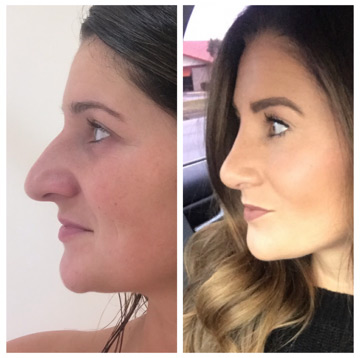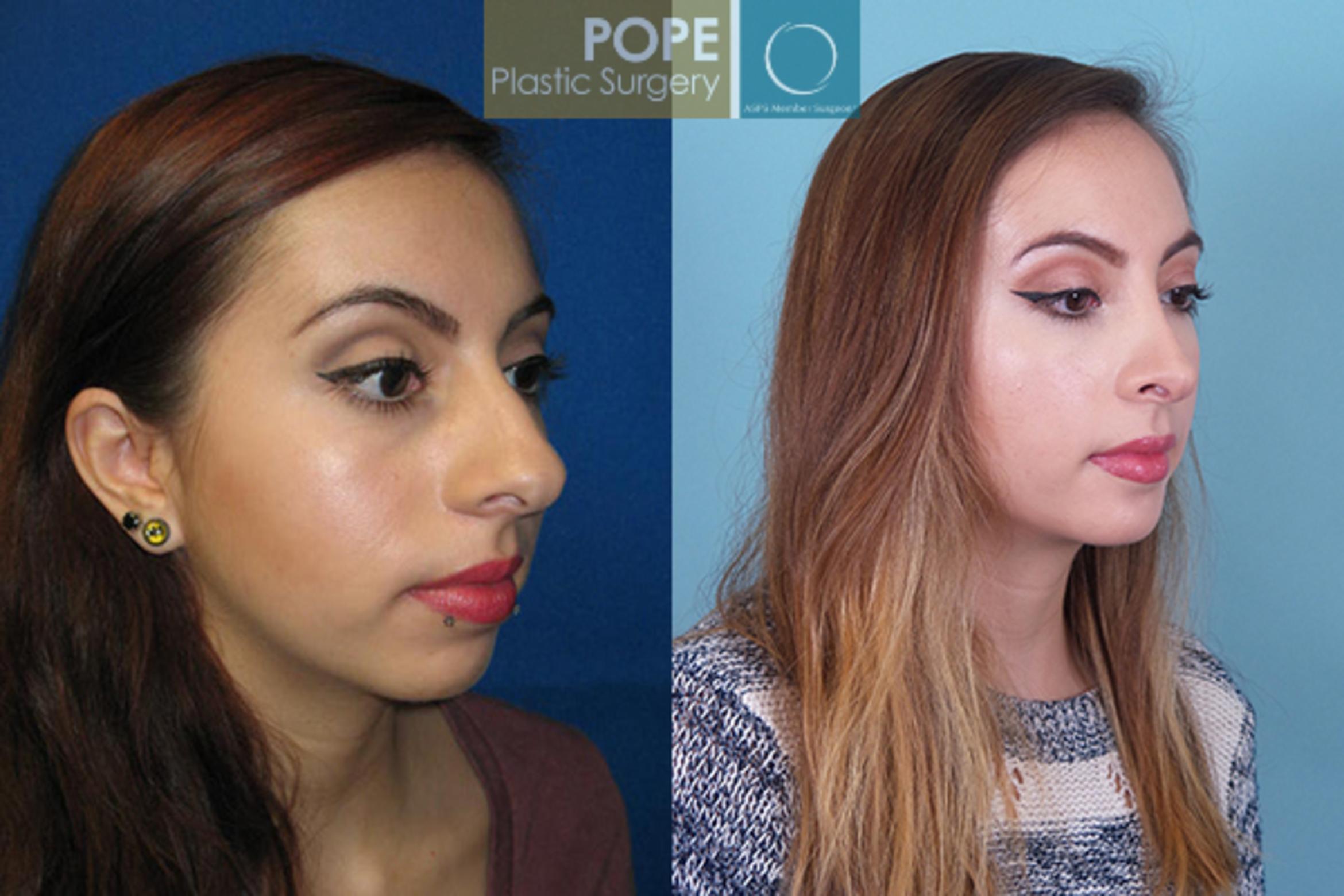The Ultimate Guide To Nose Job Austin
Table of ContentsGetting The Austin Rhinoplasty To WorkLittle Known Facts About Nose Job.Top Guidelines Of Nose Job Austin
Technically, the cosmetic surgeon's incisional technique categorizes the nasal surgical treatment either as an open rhinoplasty or as a closed nose job procedure. In open rhinoplasty, the cosmetic surgeon makes a little, irregular cut to the columella, the fleshy, exterior-end of the nasal septum; this columellar cut is additional to the normal set of cuts for a nasal correction.Rhinoplastic correction: A kid afflicted with a cleft lip and a cleft taste buds. rhinoplasty. Other than for the columellar cut, the technical and procedural approaches of open rhinoplasty and of closed rhinoplasty are similar; yet closed nose job treatment features: Reduced dissection (cutting) of the nasal tissuesno columellar cut Decreased potential for the excessive reduction (cutting) of the nasal-tip assistance Decreased post-operative edema Decreased noticeable scarring Decreased iatrogenic (unintended) damage to the nose, by the surgeon Increased schedule for effecting in situ procedural and technical changes Palpation that enables the cosmetic surgeon to feel the interior modifications effected to the nose Much shorter operating room time Quicker post-surgical healing and convalescence for the client The open nose surgery approach affords the cosmetic surgeon benefits of ease in securing grafts (skin, cartilage, bone) and, most significantly, in protecting the nasal cartilage correctly, and so better to make the suitable assessment and treatment.

Cleft lip and palate in combination; cleft lip (cheiloschisis) and cleft taste buds (palatoschisis), individually. Genetic nasal irregularities Genetically derived ethnic-nose abnormalities Allergic and vasomotor rhinitis inflammations of the mucous membrane of the nose brought on by an irritant, and brought on by circulatory and nerve system disorders. Bites animal and human Burns caused by chemicals, electrical power, friction, heat, light, and radiation.
Neoplasms deadly and benign growths Septal hematoma a mass of (normally) clotted blood in the septum Contaminants chemical damages triggered by inspired substances e. g. rhinoplasty surgery austin tx. powdered drug, aerosol antihistamine medications, et cetera. Distressing defects triggered by blunt injury, penetrating trauma, and blast injury. Venereal infection e. g., syphilis Recently, ultrasonic nose surgery which was introduced by Massimo Robiony in 2004 has actually become an alternative to standard nose surgery.

Indicators on Austin Rhinoplasty Surgery You Need To Know
Usually, the cosmetic surgeon initially separates the nasal skin and the soft tissues from the osseo-cartilagenous nasal structure, and after that reshapes them, sutures the cuts, and applies either an external or an internal stent, and tape, to debilitate the newly rebuilded nose, therefore help with the recovery of the surgical cuts.

The autologous grafts usually are harvested from the nasal septum, however, if it has insufficient cartilage (as can take place in a modification nose surgery), then either a costal cartilage graft (from the rib cage) or an auricular cartilage graft (concha from the ear) is harvested from the client's body. When the nose job needs a bone graft, it is gathered from either the cranium, the hips, or the chest; additionally, when neither type of autologous graft is readily available, an artificial graft (nasal implant) is utilized to enhance go the nasal bridge.
To tape the "before-and-after" physiognomies of the nose and the face of the client, the particular visual perspectives required are photographs of the nose seen from the anteroposterior (front-to-back) viewpoint; official statement the lateral view (profiles), the worm's-eye view (from below), the bird's-eye view (overhead), and three-quarter-profile views. Picture A. Open nose surgery: At rhinoplasty's end, after the plastic surgeon has sutured (closed) the cuts, the remedied (new) nose will be dressed, taped, and splinted stable to permit the continuous healing of the surgical incisions. Open nose job: Post-operative, the taped nose, prepared to get the metal nasal splint that debilitates and safeguards the newly fixed nose. Photo C. Open nose job: The metal nasal splint aids wound healing by safeguarding the tender tissues of the new nose. Photo D. Open nose surgery: The taped, splinted, and dressed nose finishes the nose job.
Open nose surgery: After the initial taping of the nose, a customized, metal nasal-splint, created, cut, and formed by the cosmetic surgeon, is emplaced to incapacitate and secure the tender tissues of the brand-new nose throughout convalescence. Photograph D. Open nose surgery: The taping, emplacement of the metal splint, and dressing of the new nose complete the nose job treatment.
Photo 2. Open rhinoplasty: The best lower lateral cartilage (blue) is exposed for correction. Picture 1. Open nose surgery: The columellar cut defined as a red-dot standard, will assist the surgeon in the exact suturing of the nose. Photograph 4. Rhinoplastic correction: A nasal-hump excision plan; the black line marks the dorsal aircraft of the brand-new nose.
Open rhinoplasty: the nasal suggestion is sutured to narrow the nose. Picture 1. Open nose surgery: The cuts are endonasal (in the nose), and therefore are concealed. The skin-incision to the columella help the plastic surgeon in specifically suturing to conceal the scarexcept for the columellar cut (red-dot guideline) throughout the more tips here nasal base.
Not known Facts About Rhinoplasty

Photograph 2. Open nose job: The nasal interior. The scissors show the lower lateral cartilage (blue), which is among the wing-shaped cartilages that conform the idea of the nose (austin rhinoplasty surgery). The jagged red delineation suggests the locale of the columellar cut. Once the skin has actually been lifted from the bone-and-cartilage structure, the surgeon performs the nasal correction tasks.